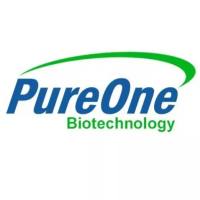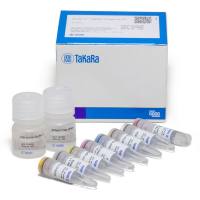【资源】蛋白质组学指南-来自杜克大学(Molecular Biologist’s Guide to Proteomics)
丁香园论坛
945
对蛋白组学方面的新手很有用。
MICROBIOLOGY AND MOLECULAR BIOLOGY REVIEWS, Mar. 2002, p. 39–63
Molecular Biologist’s Guide to Proteomics
Paul R. Graves1 and Timothy A. J. Haystead1,undefined
Department of Pharmacology and Cancer Biology, Duke University,1 and Serenex Inc.,2 Durham, North Carolina 27710
INTRODUCTION........................................................................................................................................................40
Definitions.................................................................................................................................................................40
Proteomics Origins ..................................................................................................................................................40
Genome Information ...............................................................................................................................................41
Why Proteomics?......................................................................................................................................................41
Annotation of the genome...................................................................................................................................41
Protein expression studies..................................................................................................................................41
Protein function ...................................................................................................................................................42
Protein modifications ..........................................................................................................................................42
Protein localization and compartmentalization ...............................................................................................42
Protein-protein interactions ...............................................................................................................................42
Types of Proteomics.................................................................................................................................................42
Protein expression proteomics ............................................................................................................................42
Structural proteomics..........................................................................................................................................42
Functional proteomics.........................................................................................................................................42
TECHNOLOGY OF PROTEOMICS........................................................................................................................43
Separation and Isolation of Proteins.....................................................................................................................43
One- and two-dimensional gel electrophoresis .................................................................................................43
Alternatives to electrophoresis...........................................................................................................................44
Acquisition of Protein Structure Information ......................................................................................................45
Edman sequencing...............................................................................................................................................45
Mass spectrometry...............................................................................................................................................45
(i) Sample preparation....................................................................................................................................45
(ii) Sample ionization......................................................................................................................................45
(iii) Mass analysis ...........................................................................................................................................46
(iv) Types of mass spectrometers ...................................................................................................................48
(v) Peptide fragmentation...............................................................................................................................48
(vi) Our approach to mass spectrometry ......................................................................................................49
Database Utilization ................................................................................................................................................50
Peptide mass fingerprinting database searching .............................................................................................50
Amino acid sequence database searching .........................................................................................................50
De novo peptide sequence information..............................................................................................................52
Uninterpreted MS/MS data searching...............................................................................................................52
PROTEOMICS APPLICATIONS..............................................................................................................................53
Characterization of Protein Complexes.................................................................................................................53
Protein Expression Profiling ..................................................................................................................................53
Expression profiling by two-dimensional electrophoresis ...............................................................................53
Isotope-coded affinity tags ..................................................................................................................................53
Protein arrays.......................................................................................................................................................55
Proteomics Approach to Protein Phosphorylation...............................................................................................55
Phosphoprotein enrichment ...............................................................................................................................55
Phosphorylation site determination by Edman degradation ..........................................................................55
Phosphorylation site determination by mass spectrometry ............................................................................57
(i) Phosphopeptide sequencing by MS/MS ...................................................................................................57
(ii) Analysis of phosphopeptides by MALDI-TOF.......................................................................................58
Yeast Genomics and Proteomics............................................................................................................................58
Proteome Mining .....................................................................................................................................................58
Challenges for Proteomics......................................................................................................................................60
ACKNOWLEDGMENTS ............................................................................................................................................60
REFERENCES .............................................................................................................................................................60
MICROBIOLOGY AND MOLECULAR BIOLOGY REVIEWS, Mar. 2002, p. 39–63
Molecular Biologist’s Guide to Proteomics
Paul R. Graves1 and Timothy A. J. Haystead1,undefined
Department of Pharmacology and Cancer Biology, Duke University,1 and Serenex Inc.,2 Durham, North Carolina 27710
INTRODUCTION........................................................................................................................................................40
Definitions.................................................................................................................................................................40
Proteomics Origins ..................................................................................................................................................40
Genome Information ...............................................................................................................................................41
Why Proteomics?......................................................................................................................................................41
Annotation of the genome...................................................................................................................................41
Protein expression studies..................................................................................................................................41
Protein function ...................................................................................................................................................42
Protein modifications ..........................................................................................................................................42
Protein localization and compartmentalization ...............................................................................................42
Protein-protein interactions ...............................................................................................................................42
Types of Proteomics.................................................................................................................................................42
Protein expression proteomics ............................................................................................................................42
Structural proteomics..........................................................................................................................................42
Functional proteomics.........................................................................................................................................42
TECHNOLOGY OF PROTEOMICS........................................................................................................................43
Separation and Isolation of Proteins.....................................................................................................................43
One- and two-dimensional gel electrophoresis .................................................................................................43
Alternatives to electrophoresis...........................................................................................................................44
Acquisition of Protein Structure Information ......................................................................................................45
Edman sequencing...............................................................................................................................................45
Mass spectrometry...............................................................................................................................................45
(i) Sample preparation....................................................................................................................................45
(ii) Sample ionization......................................................................................................................................45
(iii) Mass analysis ...........................................................................................................................................46
(iv) Types of mass spectrometers ...................................................................................................................48
(v) Peptide fragmentation...............................................................................................................................48
(vi) Our approach to mass spectrometry ......................................................................................................49
Database Utilization ................................................................................................................................................50
Peptide mass fingerprinting database searching .............................................................................................50
Amino acid sequence database searching .........................................................................................................50
De novo peptide sequence information..............................................................................................................52
Uninterpreted MS/MS data searching...............................................................................................................52
PROTEOMICS APPLICATIONS..............................................................................................................................53
Characterization of Protein Complexes.................................................................................................................53
Protein Expression Profiling ..................................................................................................................................53
Expression profiling by two-dimensional electrophoresis ...............................................................................53
Isotope-coded affinity tags ..................................................................................................................................53
Protein arrays.......................................................................................................................................................55
Proteomics Approach to Protein Phosphorylation...............................................................................................55
Phosphoprotein enrichment ...............................................................................................................................55
Phosphorylation site determination by Edman degradation ..........................................................................55
Phosphorylation site determination by mass spectrometry ............................................................................57
(i) Phosphopeptide sequencing by MS/MS ...................................................................................................57
(ii) Analysis of phosphopeptides by MALDI-TOF.......................................................................................58
Yeast Genomics and Proteomics............................................................................................................................58
Proteome Mining .....................................................................................................................................................58
Challenges for Proteomics......................................................................................................................................60
ACKNOWLEDGMENTS ............................................................................................................................................60
REFERENCES .............................................................................................................................................................60









